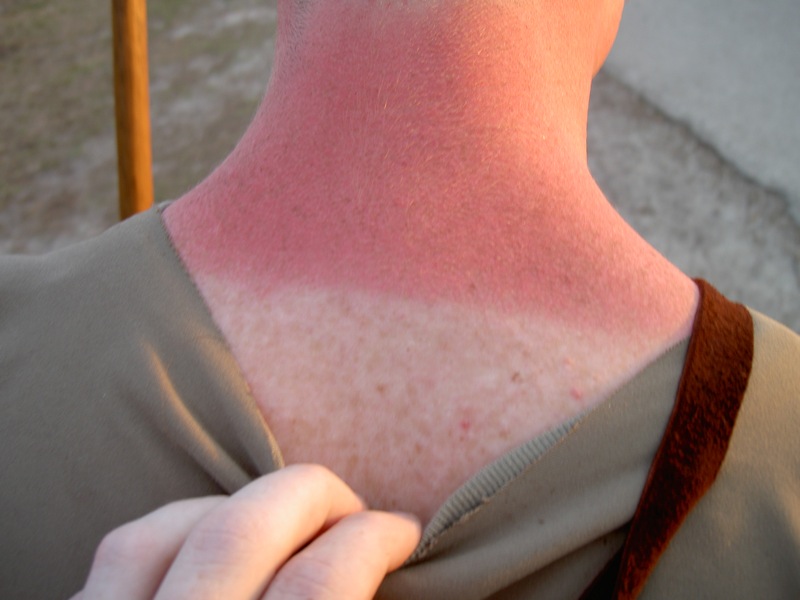|
Huaso
A huaso () is a Chilean countryman and skilled horseman, similar to the United States, American cowboy, the Mexico, Mexican charro (and its northern equivalent, the vaquero), the gaucho of Argentina, Uruguay and Rio Grande Do Sul, and the Australian Stockman (Australia), stockman. A female ''huaso'' is called a huasa, although the term china is far more commonly used for his wife or sweetheart, whose dress can be seen in cueca dancing. Huasos are found all over Central Chile, Central and Zona Sur, Southern Chile while the Aysén Region, Aysén and Magallanes and Antártica Chilena Region, Magallanes Region sheep raisers are gauchos. The major difference between the huaso and the gaucho is that huasos are involved in farming as well as cattle herding. Huasos are generally found in Chile's central valley. They ride Chilean Horse, horses and typically wear a straw hat called a ''chupalla''. They also wear a poncho—called a ''manta'' or a ''chamanto'' (although this was originall ... [...More Info...] [...Related Items...] OR: [Wikipedia] [Google] [Baidu] |
Culture Of Chile
The culture of Chile reflects the population and the geographic isolation of the country in relation to the rest of South America. Since colonial times, the Chilean culture has been a mix of Spanish colonial elements with elements of indigenous (mostly Mapuche) culture, as well as that of other immigrant cultures. The Huasos of Central Chile and their native or folk music and dance are central to Chilean folk culture. Even though the folk traditions of Central Chile are central to Chilean cultural and national identity, Chile is both geographically and culturally diverse with both the North and the South having their own folk music and dance due to different indigenous peoples and different immigrant groups settling there. Additionally, while some regions of Chile have very strong indigenous heritage, such as Araucanía Region, Easter Island, and Arica y Parinacota Region, some regions lack considerable indigenous communities and a few other regions have noteworthy non-Spanish ... [...More Info...] [...Related Items...] OR: [Wikipedia] [Google] [Baidu] |
Chupalla
The chupalla () is a traditional Chilean horseman's hat made of straw. Many people in rural areas of Central Chile use it as well. In addition, it is often used when dancing the cueca (a Chilean folk dance) and during Chilean rodeos. The name chupalla comes from ''achupalla'', a local name given to a bromelia plant that was used to make these hats. Today, chupallas are made of various types of straw, including rice and wheat. The phrase ''"por la chupalla"'' may be heard frequently in Chile. It is an interjection An interjection is a word or expression that occurs as an utterance on its own and expresses a spontaneous feeling or reaction. It is a diverse category, encompassing many different parts of speech, such as exclamations ''(ouch!'', ''wow!''), curse ... which, loosely translated, means "what the heck!". The chupalla has a flat top and a perfectly circular rim. References Hats Rider apparel Chilean culture Chilean clothing Rodeo in Chile {{Clo ... [...More Info...] [...Related Items...] OR: [Wikipedia] [Google] [Baidu] |
Banditry In Chile
Banditry ( es, bandidaje) was a considerable phenomenon in 19th century and early 20th century Central Chile and Araucanía. Many bandits achieved legendary status for their brutality and others for being regarded folk heroes. The bandits usually preyed on haciendas and their inquilinos. The Chilean War of Independence (1810–1826) shaped an era of banditry as the war transitioned into irregular warfare known as Guerra a muerte (1819–1821) which was particularly destructive for the Biobío area and ended only to see a period of outlaw banditry occur until the late 1820s.Villalobos ''et al''. 1974, pp. 406–413. The rise of banditry made travel dangerous; indeed, 1812 is held as the date from where travel between Concepción and Santiago was not longer safe for small groups.Salinas 1986, p. 59. The Pincheira brothers, a royalist outlaw group based on indigenous territory east of the Andes, was defeated and dissolved in 1832. In the words of Benjamín Vicuña Mackenna, ban ... [...More Info...] [...Related Items...] OR: [Wikipedia] [Google] [Baidu] |
Chile
Chile, officially the Republic of Chile, is a country in the western part of South America. It is the southernmost country in the world, and the closest to Antarctica, occupying a long and narrow strip of land between the Andes to the east and the Pacific Ocean to the west. Chile covers an area of , with a population of 17.5 million as of 2017. It shares land borders with Peru to the north, Bolivia to the north-east, Argentina to the east, and the Drake Passage in the far south. Chile also controls the Pacific islands of Juan Fernández, Isla Salas y Gómez, Desventuradas, and Easter Island in Oceania. It also claims about of Antarctica under the Chilean Antarctic Territory. The country's capital and largest city is Santiago, and its national language is Spanish. Spain conquered and colonized the region in the mid-16th century, replacing Inca rule, but failing to conquer the independent Mapuche who inhabited what is now south-central Chile. In 1818, after ... [...More Info...] [...Related Items...] OR: [Wikipedia] [Google] [Baidu] |
Aysén Region
The Aysén del General Carlos Ibáñez del Campo Region ( es, Región de Aysén, , '), often shortened to Aysén Region or Aisén,Examples of name usage1, official regional government site refers to the region as "Región de Aysén"., Chile's official meteorological agency refers to the region as "Región de Aisén".3 Chilean government official website refers of Pilar Cuevas Mardones as intendant of "Región de Aysén" .4 Chile's Ministry of Public Works calls the region "Región de Aysén" in the title of their 2011 report on that region.5, Corporación Nacional Forestal, a government agency refers to the region as "Región de Aysén" in their homepage. Here is some evidence of the short name use in English:I ''The Guardian'' reports on the 2012 Aysén protest.II ''Santiago Times'', a local English language newspaper use "Aysén Region" in a note referring to the same protest.III''Santiago Times'' again. *Vscientific paper in '' Journal of Hospital Infection'' referring to th ... [...More Info...] [...Related Items...] OR: [Wikipedia] [Google] [Baidu] |
Poncho
A poncho (; qu, punchu; arn, pontro; "blanket", "woolen fabric") is an outer garment designed to keep the body warm. A rain poncho is made from a watertight material designed to keep the body dry from the rain. Ponchos have been used by the Native American peoples of the Andes, Valley of Mexico and Patagonia since pre-Hispanic times, from places now under the territory of Mexico, Ecuador, Colombia, Chile, Bolivia, Peru, and Argentina and are now considered typical American garments. Types In its simplest form, the poncho is essentially a single large sheet of fabric with an opening in the center for the head. It often has an extra piece of fabric serving as a hood. Rainproof ponchos are normally fitted with fasteners to close the sides once the poncho is draped over the body, with openings provided for the arms. Many ponchos have hoods attached to ward off wind and rain. Alternative ponchos are now designed as fashion items. They are the same shape but of different ... [...More Info...] [...Related Items...] OR: [Wikipedia] [Google] [Baidu] |
Zona Sur
Zona Sur (''Southern Zone'') is one of the five natural regions on which CORFO divided continental Chile in 1950. Its northern border is formed by the Bío-Bío River, which separates it from the Central Chile Zone. The Southern Zone borders the Pacific Ocean to the west, and to the east lies the Andean mountains and Argentina. Its southern border is the Chacao Channel, which forms the boundary with the Austral Zone. While the Chiloé Archipelago belongs geographically to the Austral Zone in terms of culture and history, it lies closer to the Southern Zone. Geography Although many lakes can be found in the Andean and coastal regions of central Chile, the south (Sur de Chile) has the country's most lakes. Southern Chile stretches from below the Río Bío-Bío at about 37° south latitude to below Isla de Chiloé at about 43.4° south latitude. In this lake district of Chile, the valley between the Andes and the coastal range is closer to sea level, and the hundreds of riv ... [...More Info...] [...Related Items...] OR: [Wikipedia] [Google] [Baidu] |
Folk Etymology
Folk etymology (also known as popular etymology, analogical reformation, reanalysis, morphological reanalysis or etymological reinterpretation) is a change in a word or phrase resulting from the replacement of an unfamiliar form by a more familiar one. The form or the meaning of an archaic, foreign, or otherwise unfamiliar word is reinterpreted as resembling more familiar words or morphemes. The term ''folk etymology'' is a loan translation from German ''Volksetymologie'', coined by Ernst Förstemann in 1852. Folk etymology is a productive process in historical linguistics, language change, and social interaction. Reanalysis of a word's history or original form can affect its spelling, pronunciation, or meaning. This is frequently seen in relation to loanwords or words that have become archaic or obsolete. Examples of words created or changed through folk etymology include the English dialectal form ''sparrowgrass'', originally from Greek (" asparagus") remade by analogy ... [...More Info...] [...Related Items...] OR: [Wikipedia] [Google] [Baidu] |
Quechua Languages
Quechua (, ; ), usually called ("people's language") in Quechuan languages, is an indigenous language family spoken by the Quechua peoples, primarily living in the Peruvian Andes. Derived from a common ancestral language, it is the most widely spoken pre-Columbian language family of the Americas, with an estimated 8–10 million speakers as of 2004.Adelaar 2004, pp. 167–168, 255. Approximately 25% (7.7 million) of Peruvians speak a Quechuan language. It is perhaps most widely known for being the main language family of the Inca Empire. The Spanish encouraged its use until the Peruvian struggle for independence of the 1780s. As a result, Quechua variants are still widely spoken today, being the co-official language of many regions and the second most spoken language family in Peru. History Quechua had already expanded across wide ranges of the central Andes long before the expansion of the Inca Empire. The Inca were one among many peoples in present-day Peru who already sp ... [...More Info...] [...Related Items...] OR: [Wikipedia] [Google] [Baidu] |
Redneck
''Redneck'' is a derogatory term chiefly, but not exclusively, applied to white Americans perceived to be crass and unsophisticated, closely associated with rural whites of the Southern United States.Harold Wentworth, and Stuart Berg Flexner, ''Dictionary of American Slang'' (1975) p. 424. Its meaning possibly stems from the sunburn found on farmers' necks dating back to the late 19th century. Its modern usage is similar in meaning to ''cracker'' (especially regarding Texas, Georgia, and Florida), '' hillbilly'' (especially regarding Appalachia and the Ozarks), and '' white trash'' (but without the last term's suggestions of immorality). In Britain, the ''Cambridge Dictionary'' definition states: "A poor, white person without education, esp. one living in the countryside in the southern US, who is believed to have prejudiced ideas and beliefs. This word is usually considered offensive." People from the white South sometimes jocularly call themselves "rednecks" as insider humor ... [...More Info...] [...Related Items...] OR: [Wikipedia] [Google] [Baidu] |





.png)
